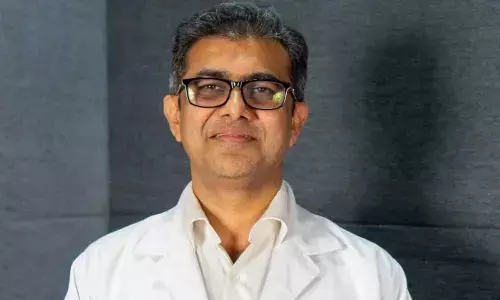Children worst sufferers of air pollution in Hyderabad
 Children worst sufferers of air pollution in Hyderabad
Children worst sufferers of air pollution in HyderabadIt’s not surprising that air pollution is worse in the city and around busy roads, particularly when traffic is moving slowly. Traffic pollution caused asthma among 3.5 lakh children in India, the second largest after China, in 2015, finds a Lancet study that analyzed 194 countries.
Hyderabad: It's not surprising that air pollution is worse in the city and around busy roads, particularly when traffic is moving slowly. Traffic pollution caused asthma among 3.5 lakh children in India, the second largest after China, in 2015, finds a Lancet study that analyzed 194 countries.
According to some researches, India ranks below other countries for this metric because although levels of other pollutants (particularly PM2.5) in the country are among the highest in the world, Nitrogen Dioxide (NO2) levels (between 2010 and 2012) in Indian cities appear to be lower than or comparable with European and US cities.
In India, an estimated 1.5 million people died from the effects of air pollution in 2012, according to WHO data. Globally, air pollution both indoor and outdoor caused nearly 7 million deaths, or 11.6% of deaths in 2012, making it the world's largest single environmental health risk, according to World health statistics 2016.
About 98% of cities in low and middle income countries with more than 1 lakh inhabitants do not meet norms set out in the World Health Organization's (WHO) air quality guidelines, according to WHO's global urban air quality database.
Epidemiological studies have demonstrated an association between different levels of air pollution and various health outcomes including mortality, exacerbation of asthma, chronic bronchitis, respiratory tract infections, ischemic heart disease and stroke.
It is said that pollution from traffic emissions is the major cause for worry. 80 per cent of the ambient nitrogen dioxide is the culprit say doctors. With nearly thousand vehicles get added everyday to the existing volume in the form of registrations.
"TRAP (traffic related air pollution) directly causes hyper responsiveness of air way, oxidative stress and directly irritate the airways mucosa. In TRAP, mainly DEP (diesel exhausted pollution) is the 90%cause of outdoor air pollution. In urbanisation and low socioeconomic status children live in 300metres from roadways, and they are most effected. There is a risk of exacerbation of asthma which can be fatal. Following a diet rich in fruits and vegetables could help children with asthma," said Dr M Naresh, MD (Pulmonology), a junior resident at Osmania Hospital.
"Children exposed to air pollution are at increased risk of asthma, allergic rhinitis and later in life they are prone to get chronic lung diseases and will also be at risk of getting allergic conjunctivitis and skin allergies like contact dermatitis. High level of carcinogens in the smoke of vehicles may affect with increased risk for lung cancer in later part life," said Dr Ramesh Babu Dampuri, consultant paediatrician and adolescent physician and RMO at Niloufer Hospital, Hyderabad.
Acute effects of diesel exhaust exposure include irritation of the nose and eyes, lung function changes, respiratory changes, headache, fatigue and nausea. Chronic exposures are associated with cough, sputum production and lung function decrements.




















